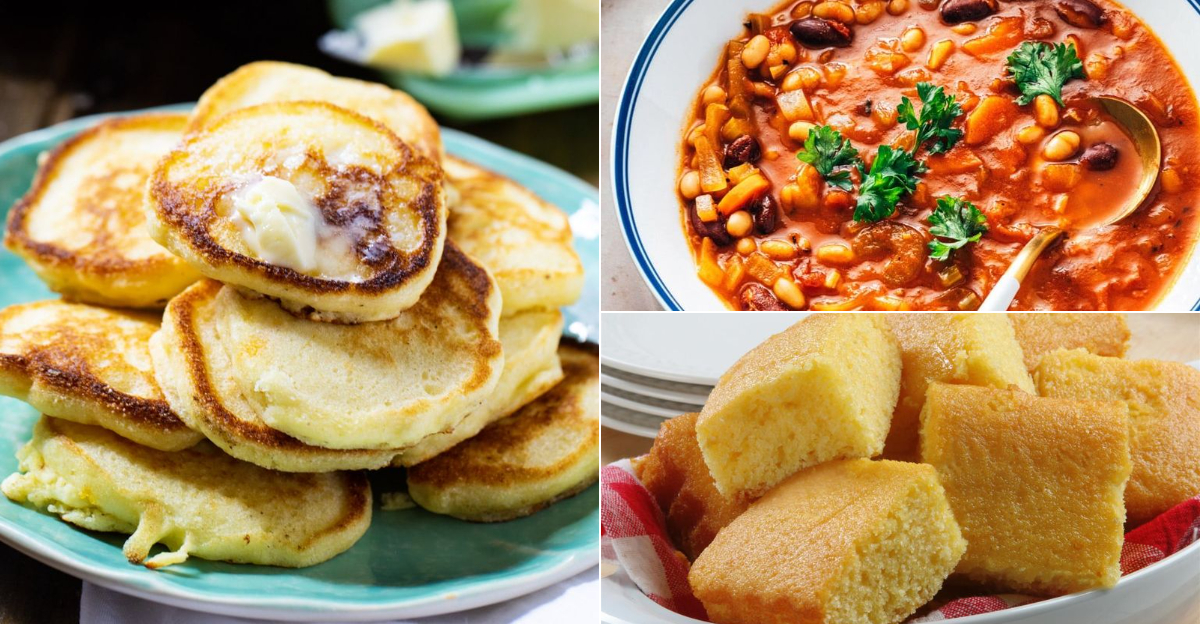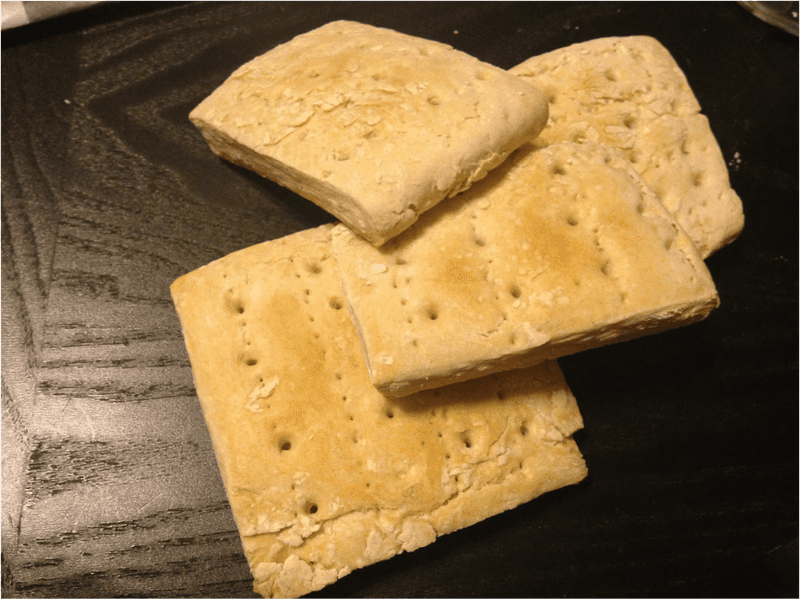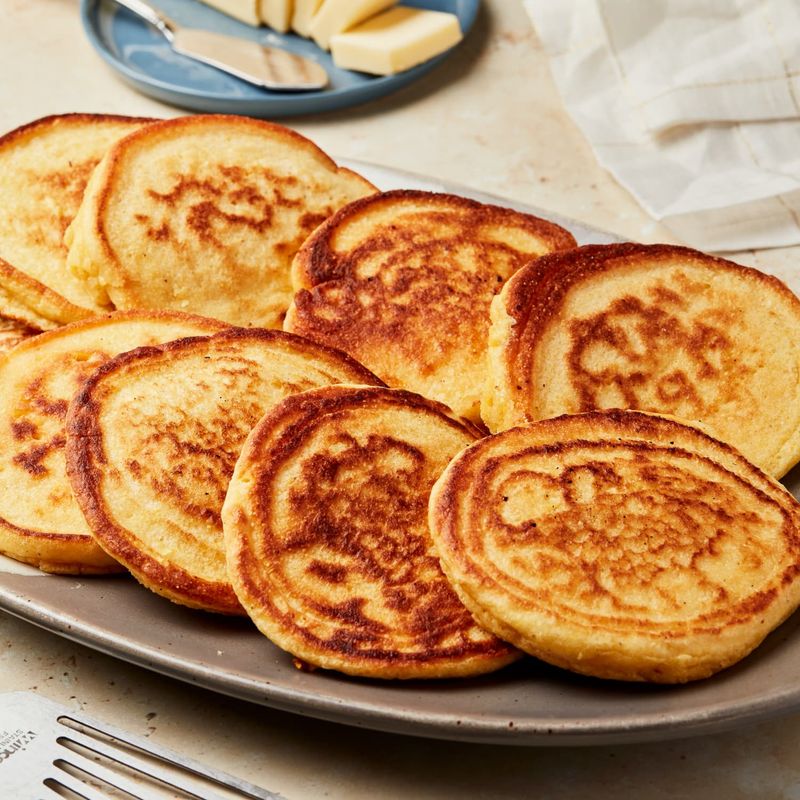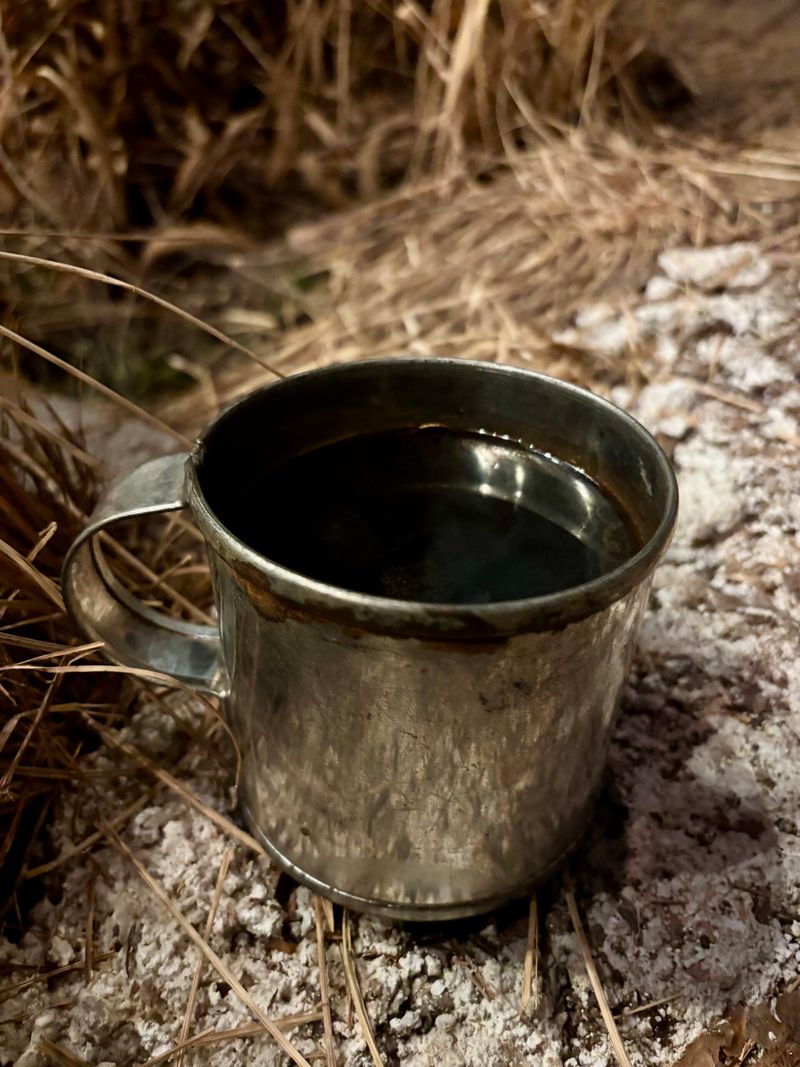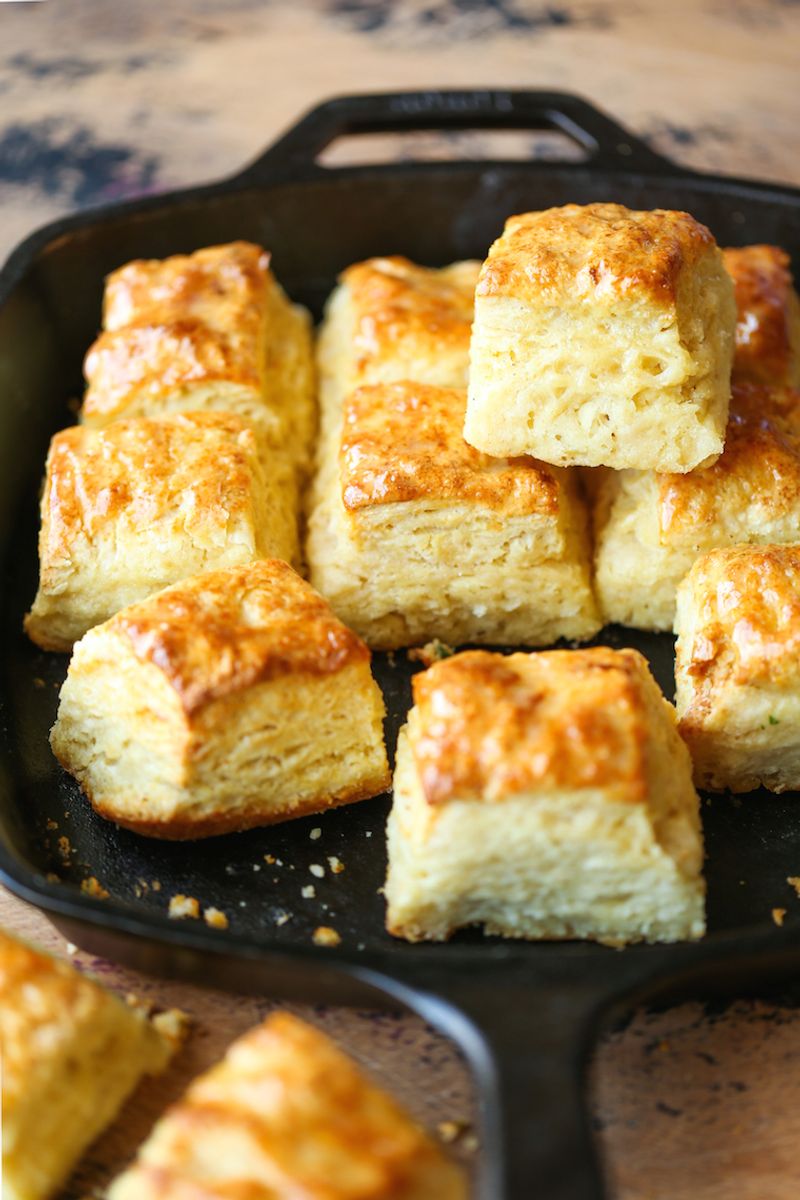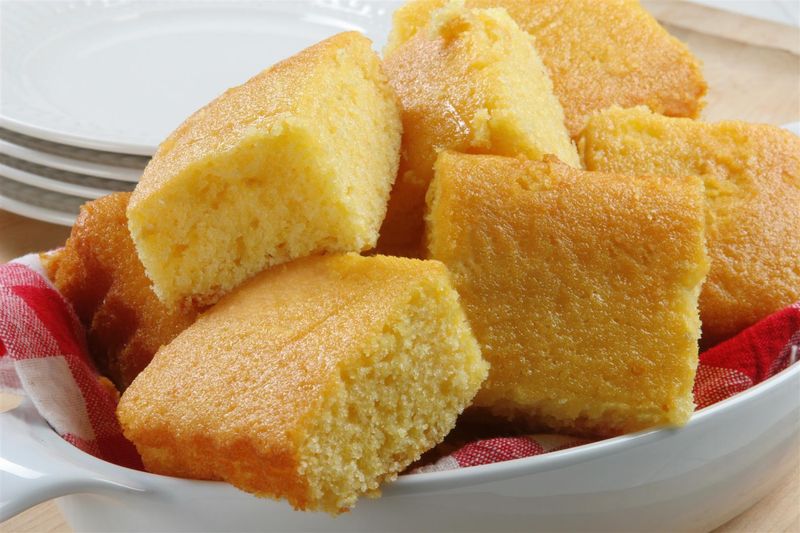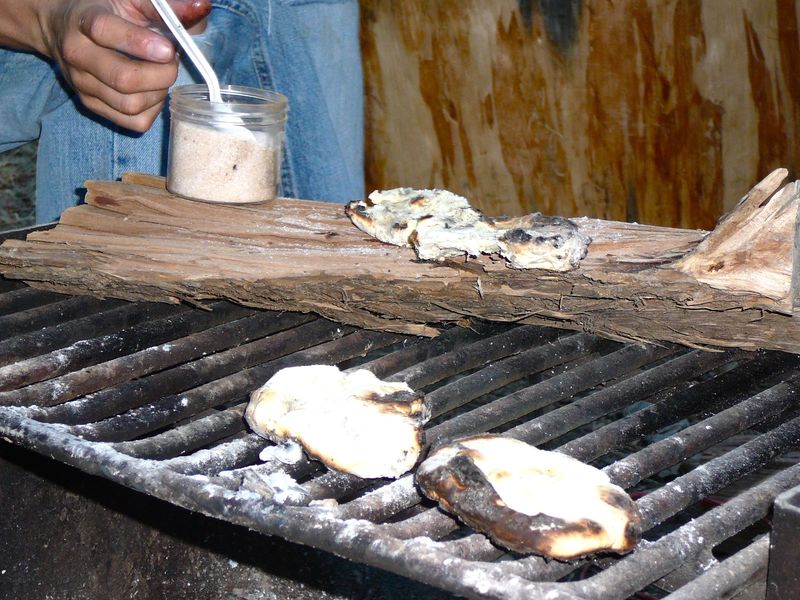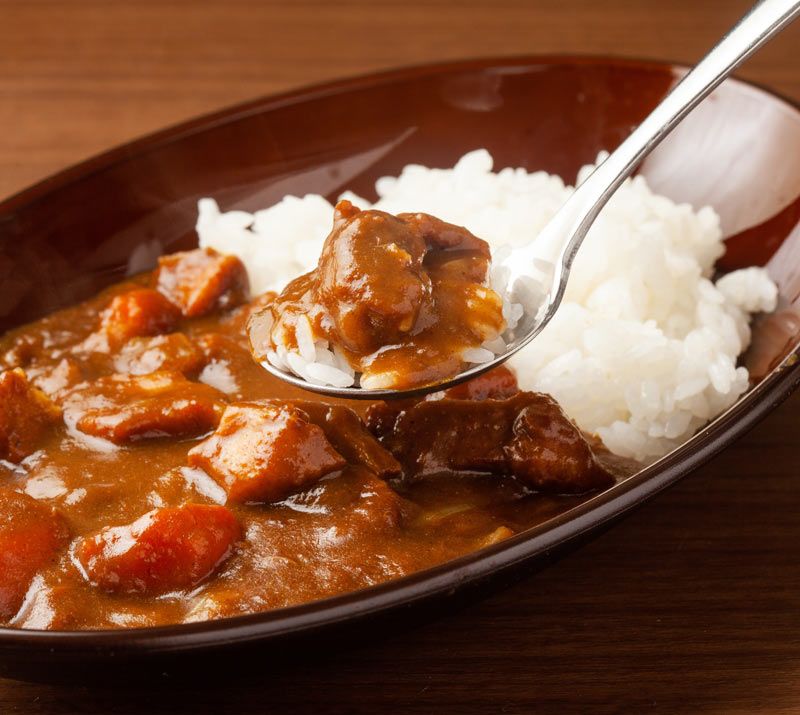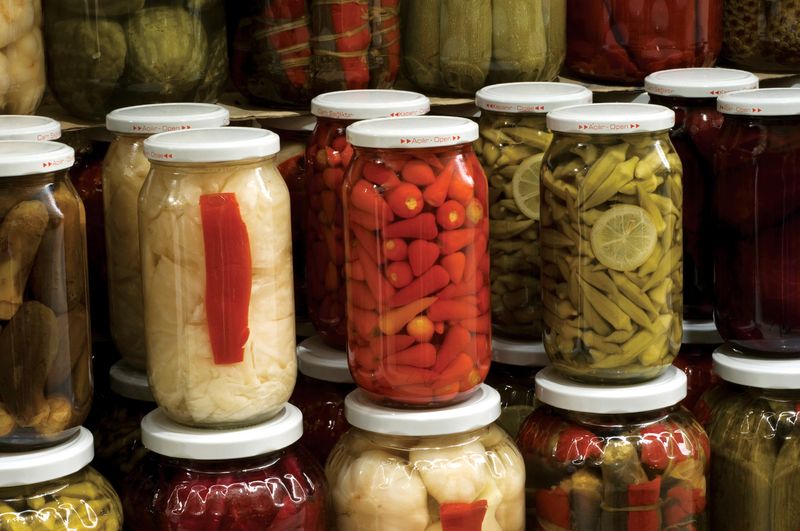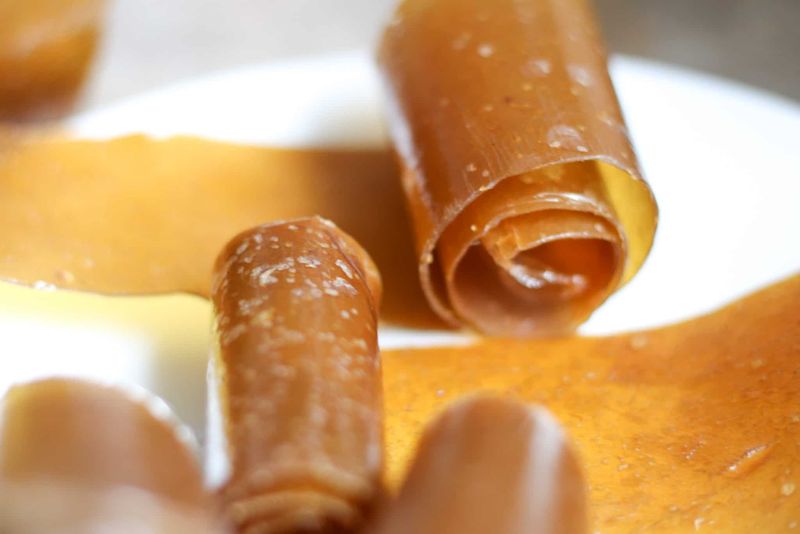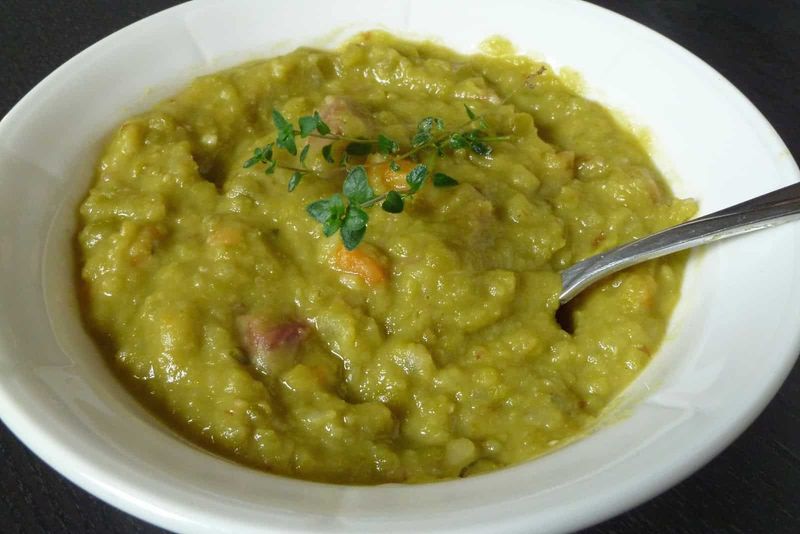During the American Civil War, soldiers and civilians alike had to get creative with limited ingredients. What began as desperate measures to stave off hunger evolved into cherished recipes passed down through generations. These hearty, practical meals survived not just because they were filling, but because they became part of our cultural heritage, bringing comfort during both war and peace.
1. Hardtack
Simple yet enduring, hardtack sustained countless soldiers through the darkest days of the Civil War. These dense, flour-based crackers earned nicknames like ‘sheet iron crackers’ and ‘tooth dullers’ because of their notorious hardness.
Soldiers typically softened them in coffee or crumbled them into soups. Some men joked they could hear the weevils crawling inside at night!
Today’s versions are much more palatable, often incorporating herbs or honey. Camping enthusiasts and historical reenactors still make these durable biscuits, appreciating their shelf-stable nature and connection to American history.
2. Salt Pork & Beans
Soldiers marching through enemy territory could always count on this protein-packed duo. Salt-cured pork provided precious fat and flavor, while beans delivered filling sustenance that kept hunger at bay for hours.
Men would soak their beans overnight in canteens, then slow-cook them with diced salt pork over campfires. The resulting dish was hearty enough to fuel long marches and brutal battles.
Modern versions have evolved into beloved baked beans, often sweetened with molasses or brown sugar. New England Saturday night suppers still feature this historic pairing that once kept armies moving through America’s bloodiest conflict.
3. Johnnycakes
Golden disks of cornmeal simplicity, Johnnycakes saved countless families from starvation when wheat flour became scarce. Native Americans taught early settlers this cooking technique long before the Civil War began.
Families would mix cornmeal with boiling water and a pinch of salt, then fry the batter into pancake-like rounds. The name possibly derives from ‘journey cakes,’ as they traveled well in saddlebags.
Modern Southern breakfast tables still welcome these crispy-edged treats, often drizzled with sorghum syrup or honey. Their staying power proves that necessity truly is the mother of delicious invention.
4. Coffee (or “Confederate Coffee”)
Nothing boosted troop morale like coffee—when they could get it. Union soldiers received rations of the real thing, but Confederates had to improvise after Northern blockades cut off imports.
Creative Southerners roasted acorns, chicory roots, sweet potatoes, or even burnt corn to create coffee substitutes. The resulting brews rarely fooled anyone but provided warmth and a ritual that connected them to normal life.
Chicory coffee remains beloved in New Orleans today. This flavorful adaptation outlasted the war that necessitated it, becoming a cultural touchstone that tourists specifically seek out when visiting Louisiana.
5. Peanut Soup
Virginia aristocrats enjoyed this creamy delicacy long before war erupted, but the humble peanut became crucial when meat grew scarce. The protein-rich legumes provided essential nutrition in a form that stored well.
Families would grind roasted peanuts into paste, then slowly stir it into chicken broth with cream. When times were particularly hard, squirrel meat might find its way into the pot.
Historic Virginia restaurants still serve this velvety soup as a regional specialty. Modern versions often include celery and onion, but the essential peanut base remains unchanged—a testament to both necessity and good taste.
6. Hoecakes
Farm families created these rustic cornmeal patties when ovens weren’t available—or when fleeing advancing armies. Legend claims they were originally cooked on the flat part of garden hoes held over open flames.
Unlike johnnycakes, hoecakes typically contained a bit of fat—lard when available or bacon grease saved from precious meat. The resulting cakes had crispy exteriors and tender centers that satisfied hungry bellies.
Many Southern families still make these humble cakes using cast iron skillets. The tradition continues partly from nostalgia and partly because their simplicity and delicious flavor never went out of style.
7. Skillet Biscuits
When conventional ovens weren’t available, inventive cooks turned to cast iron for these quick-bread solutions. Soldiers would mix flour with whatever fat was available—often salt pork drippings—and water.
The resulting dough was pressed into a greased skillet and covered with a lid, creating an improvised oven effect. Hot coals placed on top of the lid ensured even baking without a proper stove.
Today’s fluffy Southern buttermilk biscuits evolved from these humble beginnings. While modern versions use butter and baking powder, the essential technique of skilled hands working minimal ingredients into comforting bread remains unchanged.
8. Molasses & Cornbread
Sweet relief came in the form of this simple pairing when sugar became nearly impossible to find. Blackstrap molasses provided not just sweetness but crucial iron and nutrients during times of severe food shortages.
Families would drizzle the thick, dark syrup over warm cornbread for a treat that doubled as essential nutrition. Children especially looked forward to this combination that made monotonous wartime diets more bearable.
Southern tables still feature this classic combination today. The distinctive flavor profile—sweet, slightly bitter molasses against the grainy texture of cornbread—creates a uniquely American taste experience that survived long after the conflict ended.
9. Soup Beans
Mountain families relied on this humble pot of beans when meat was scarce and bellies were empty. A handful of dried beans could stretch to feed an entire family when simmered all day with just a spoonful of bacon grease for flavor.
Women would start the pot in the morning, letting it bubble slowly while tending to other chores. The aroma would fill the house, creating comfort even in desperate times.
Appalachian cooks still prepare this dish exactly as their great-grandmothers did. Typically served with a side of cornbread or onions, soup beans represent survival cooking that became comfort food through generations of shared meals.
10. Ash Cakes
Soldiers on the move mastered this primitive cooking method when no equipment was available. Cornmeal mixed with water and salt was shaped into small cakes, then wrapped in cabbage leaves or oak leaves.
These wrapped dough balls were nestled directly in the hot ashes of campfires. The leaves prevented ash from sticking while allowing the heat to cook the cornmeal through.
Modern survivalists and historical reenactors still practice this technique. The resulting bread has a unique, slightly smoky flavor that connects modern Americans to their resourceful ancestors who made do with almost nothing during the nation’s most divisive conflict.
11. Confederate “Slosh” (Beef & Rice Stew)
Resourceful Southern cooks created this catch-all stew when food supplies dwindled to almost nothing. A small amount of tough beef—or whatever meat was available—was stretched with rice and whatever vegetables could be foraged.
The resulting one-pot meal earned its unappetizing name from the sound it made when stirred. Soldiers would share this communal dish, grateful for any hot food during harsh winter campaigns.
Modern beef and rice soups draw from this tradition of stretching scarce protein. The practical approach of combining small amounts of meat with plentiful grains continues in budget-friendly family cooking across America.
12. Pickled Vegetables
Garden bounty became winter survival through the ancient art of pickling. Families would pack cucumbers, cabbage, onions, and green tomatoes into crocks with vinegar, salt, and spices before the fall frost arrived.
These preserved vegetables provided essential vitamins during winter months when scurvy threatened both soldiers and civilians. The distinctive tang of vinegar brightened monotonous meals of cornbread and beans.
Our modern love of pickles connects directly to this preservation necessity. While refrigeration has made pickles optional rather than essential, the distinctive flavors have remained beloved across generations, especially in Southern cuisine.
13. Apple Leather (Dried Fruit Paste)
Autumn apple harvests became portable nutrition through this ingenious preservation method. Families would cook apples down to a thick puree, spread it thin on cloth-covered boards, and dry it in the sun.
The resulting leathery sheets could be cut into strips and carried in pockets. Children treasured these sweet treats that provided rare sugar in diets otherwise dominated by cornmeal and beans.
Today’s fruit roll-ups descend directly from this practical preservation technique. While modern versions often contain added sugar and food coloring, the basic concept of portable, preserved fruit remains unchanged from Civil War days.
14. Peas Porridge
“Peas porridge hot, peas porridge cold” wasn’t just a nursery rhyme but a reality for families struggling through wartime shortages. Dried split peas cooked with water created a filling mush that required no meat to satisfy hunger.
Cooks would often leave the pot simmering for days, adding more water as needed. The nursery rhyme’s mention of “nine days old” wasn’t exaggerating—families ate from the same pot for as long as it lasted.
Modern split pea soup, often enhanced with ham bones and herbs, evolved from this basic survival food. The comforting, stick-to-your-ribs quality has kept this dish relevant through generations of American home cooking.
15. Scrapple (or “Poor Man’s Pâté”)
Frugal cooks transformed slaughterhouse leftovers into hearty breakfast meat through this waste-not approach. After butchering, every part of the pig—head, organs, and scraps—was boiled until the meat fell from the bones.
The resulting broth and meat bits were mixed with cornmeal and seasonings, then formed into loaves. Once cooled, the loaves were sliced and fried crisp for breakfast, providing precious protein to start the day.
Pennsylvania Dutch communities still consider scrapple a delicacy rather than desperation food. Modern versions use more desirable cuts but maintain the distinctive cornmeal binding and savory spicing that transformed necessity into regional tradition.
